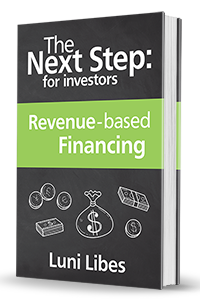Yet-another sales funnel to manage…
Fundraising is a sales process. If you’ve not yet read The Next Step: A guide to startup sales and marketing, now would be a good time to pick up a copy, flip to the section on sales, and substitute “company” for “product” and “investor” for “customer.”
If you are considering raising funds for your company, then by now you should have a well-designed sales pitch and plan for your product/service. To succeed at fundraising, you need to repeat that effort, but now your company is the product you are selling and the investors are your customers.
As in all sales processes, most customers will say no. Those who ultimately say yes will usually require multiple conversations between the initial pitch and final close. Like any sales funnel, you will need to talk to many investors to close the few you need.
This process is difficult and time-consuming. It is a distraction. Every hour you spend raising money is an hour you are not spending talking and selling to customers. Nonetheless, most entrepreneurs I meet have an expectation of raising money from investors (and an unrealistic expectation of how quickly this will happen).
So, how long does fundraising take? Well, for an experienced entrepreneur already known to investors, a “quick” fundraising effort from can take three months. Successful fundraising efforts more commonly take six to nine months. However, most fundraising efforts are not successful and can instead drag on for a year or more, continuing until the founder runs out of his or her own funds to keep going.
The key to a successful fundraising is to plan ahead, focus, and push to complete it as quickly as possible. Use your network to get introduced to as many investors as possible. Pitch to them all in as short a time as possible. Create an artificial deadline to push some initial investors toward a commitment, and then use those commitments as momentum to reach your fundraising goal.
You get only one chance to pitch each investor for the first time. That first pitch needs to spark some interest. Once an investor passes on your deal, you are unlikely to win them over, no matter how many times they see your pitch. Thus, treat every pitch as the most important pitch you’ve ever made. Treat every investor as if the success of your fundraising rests on their participation.
The initial pitch is rarely sufficient to close an investor. After that pitch, send the investor a follow-up email. Thank them for their time. Send them a copy of your presentation. Send them more details on your business. Ask them if they have any questions. Engage them in a conversation, which is all part of the investment process.
Like any other complex sales process, communications are the key to closing the sale. Those communications should be bi-directional. Yes, you will pitch to the investors, but it is also important that you (or your team member) keep track of the questions asked and the feedback offered, so you can iterate and improve the pitch. This way you can better meet the expectations of the next set of investors.
In the end, fundraising is all about numbers. Numbers of investors, numbers of conversations, ultimately leading to number of dollars committed, signed, and deposited into the bank.











